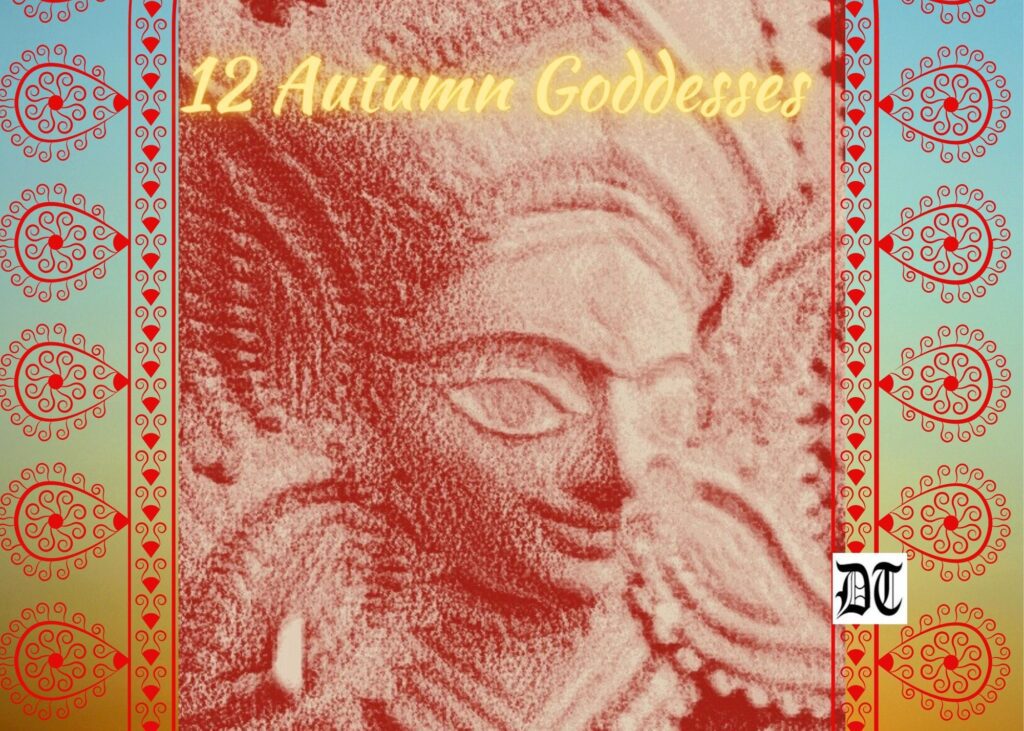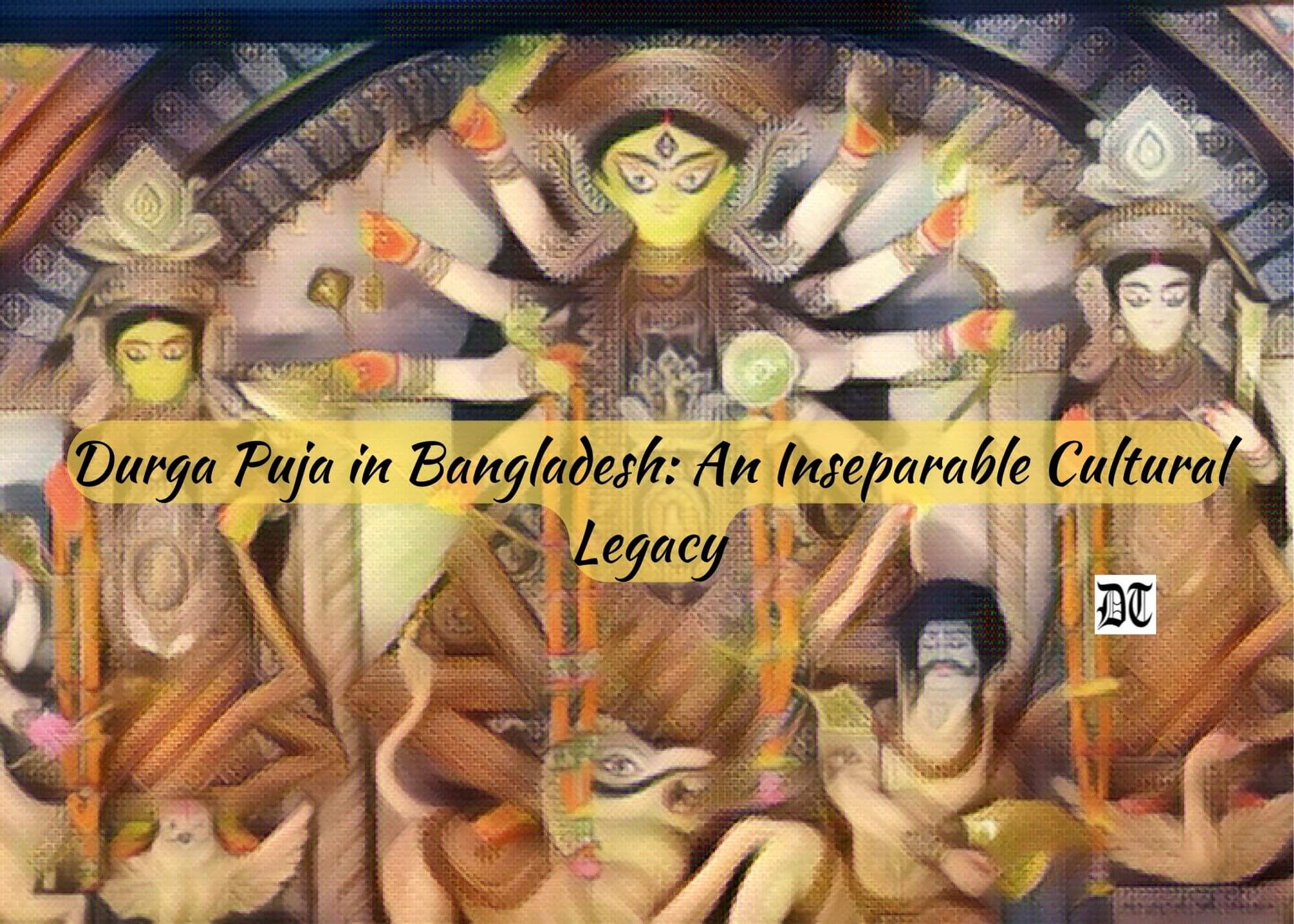Reading Time: 3 minutes
Religion and faith are personal; festivities belong to all. It’s the Bangladesh government’s secular policy. Economic growth’s positive impact is palpable. Eid and Durga Puja feel similar, reports Tabassum from Bangladesh in an exclusive Special Feature for Different Truths.

Durga Puja – an inseparable legacy of Bengali culture – is celebrated with gusto and festivities all over Bangladesh. Over time, the Puja celebrations of Goddess Durga have changed. In this respect, I would like to remember the past compared to the present celebrations of Durga Puja.
This year in Bangladesh, there will be thirty-two thousand Puja mandaps. The extraordinary aspect of the celebration is that Goddess Durga’s homecoming is not only celebrated in the major cities but also in remote areas on a large scale, like in the old times. The pomp and grandeur and the scale of celebrations might not be the same in remote areas, but the level of respect, devotion and harmony are similar.
Over the years, the Puja celebrations have changed dramatically. Let’s talk about the elements step-by-step. Firstly, the practice of visible secularism, which has been guaranteed in the Constitution of Bangladesh. The way Durga Puja is celebrated feels like Eid. The level of celebrations is no less either.
The joy, cheer and happiness during Puja are still fresh in my memories.
I remember the celebrations in my hometown, Chittagong. I remember the fragrance of dhup, the sound of dhak-dhol, dances, and the beauteous face of Goddess Durga. The joy, cheer and happiness during Puja are still fresh in my memories.
I won’t deny a few stray vandalism incidents. But the numbers are much smaller these days compared to those sixteen years ago. The change of political shift has played a vital part. The vandalism these days has barely anything to do with communal issues. Instead, the third evil force wants to destroy communal harmony and damage Bangladesh’s reputation on the world podium.
Secondly, the change in the mind set-up is the present government’s policy. It is an objective view. This government policy is “Dharma jar-jar, utshob shobar.” Each community has its religion, but the festivals belong to all. I remember that Muslims bought clothes for Eid. Now, they buy clothes for Durga Puja as well.
Economic growth and better living standards have had a significant impact. It’s fantastic and a matter of pride how Bangladesh has progressed economically over the years.
The cultural revolution has contributed as well. And economic growth has a vital part to play.
The cultural revolution has contributed as well. And economic growth has a vital part to play. I remember only one program celebrating the Puja on Bijoya Doshomi on national television. Then, we had only one national television channel. These days, you may watch weekly programs on different channels celebrating Puja. There are other cultural programs during the Puja celebration on a large scale all over the country.
Demographic factors play a part as demographic characteristics change. The psychology of people has changed over the years and their behaviour patterns. I am proud to say that there is no feeling of majority and minority.
You might notice the Muslim women offering pranam to Goddess Durga in the Namaskar posture.
Let’s go back to the behaviour pattern. You might notice the Muslim women offering pranam to Goddess Durga in the Namaskar posture. You can see married Muslim women participating in the dance wearing sindoor. The festival’s acceptance as universal regardless of caste and religion is an example of a new secular Bangladesh. Besides, Durga Puja is sharbojonin (for all).
Commercialisation is also on the rise. Playing songs on loudspeakers, band shows, and sponsorship have taken away the aura of rituals. There is a competition for the decoration of the Puja mandaps. The new trends are in vogue. The crowd is flocking to the mandaps in a hurry. There is a crowd, and the traffic is always there. The Puja mandaps used to be a place for gathering, chatting, and social interactions. In the big mandaps, it’s not possible these days. But the tradition is still alive in the local Puja mandaps — the mandaps organised by the residents with modesty and simplicity.
Sprinkling holy water, anjali, bhog, prasad, and distributing labra keep the old traditions alive. The beautiful lighting, dhunichi dance, the dhup, the ululation, the sound of dhak and dhol, and the aesthetic rituals are soothing for the million eyes and minds, regardless of the religions of Bangladesh during Durga Puja.
Picture design by Anumita Roy, Different Truths














